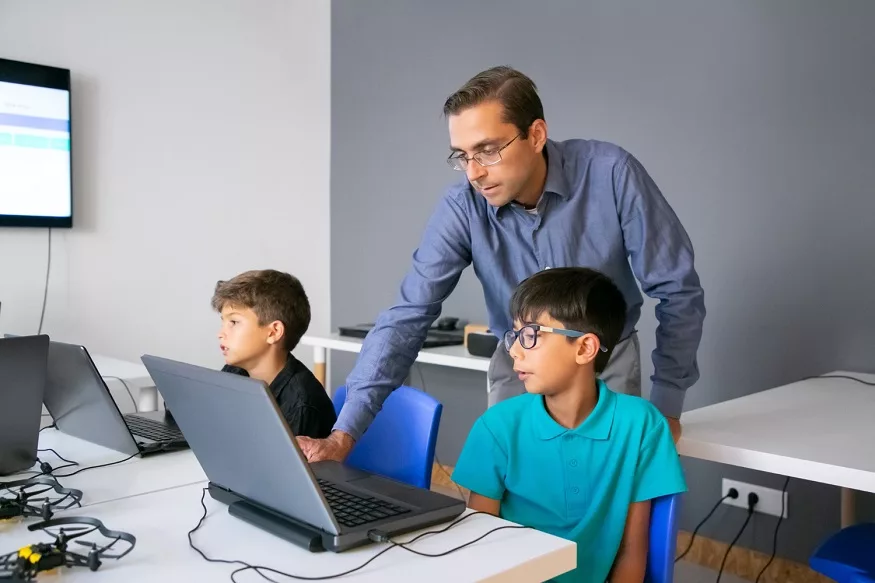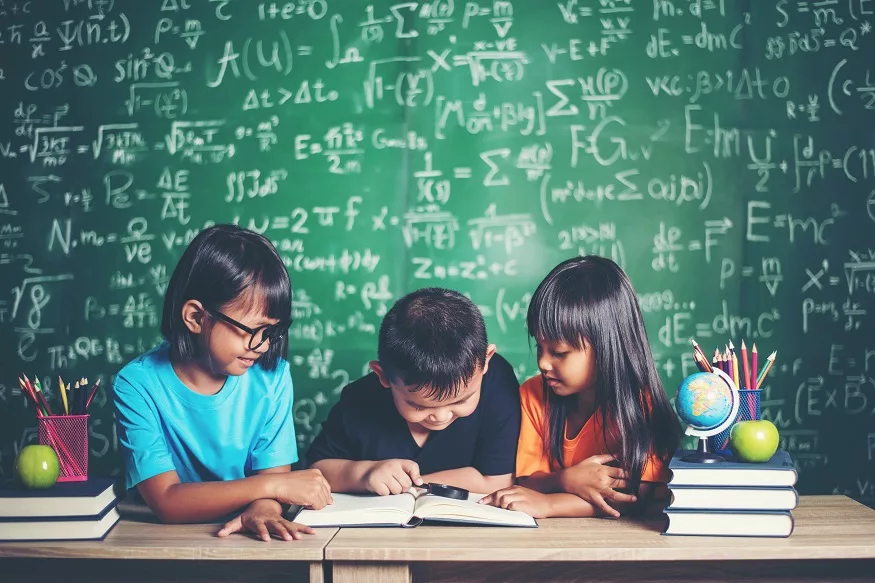In today’s unpredictable educational landscape, schools and educators need to implement creative teaching techniques that not only engage students but also improve their learning experiences. The syllabus for ICSE schools is established by the Council for the Indian School Certificate Examinations, and educators have the option to use a variety of unique teaching approaches within this structure. Today, we are going to explore a variety of creative teaching techniques that are used successfully in ICSE classrooms to make learning more interactive, engaging, and meaningful.
1. Interactive Whiteboards and Multimedia Tools
Interactive whiteboards and multimedia tools have revolutionized classroom teaching. These technologies allow teachers to present information dynamically and interactively, making lessons more engaging for students. In ICSE classrooms, interactive whiteboards are increasingly being used to create visually stimulating presentations.
For example, in science classes, teachers can use interactive whiteboards to display 3D models of molecules or conduct virtual experiments. In history classes, historical events can be brought to life through multimedia presentations with images and videos. Such interactive tools not only capture students’ attention but also facilitate a deeper understanding of complex concepts.
2. Flipped Classroom Approach
The flipped classroom approach is gaining popularity in ICSE schools. In this method, the traditional model of classroom instruction is reversed. Students are provided with learning materials, such as video lectures or reading assignments, to study at home before coming to class. Classroom time is then used for discussions, group activities, and problem-solving exercises.
For instance, in mathematics, teachers can create video tutorials explaining mathematical concepts, and students can watch these videos before the class. During the class, the teacher can focus on clarifying doubts, solving problems together, and engaging students in meaningful discussions. This approach encourages active learning and allows teachers to provide personalized support to students.
Also read : The impact of teacher training on student learning
3. Project-Based Learning (PBL)
Project based learning is the best teaching technique in which students participate in future projects that require them to study and solve issues in the real world. ICSE teachers are increasingly incorporating PBL into the curriculum to promote critical thinking, research skills, and collaboration.
In subjects like geography, students can work on projects that involve researching environmental issues in their local area and proposing solutions. Students can make multimedia presentations or videos based on the topics of a novel or play they are studying in literature. PBL not only makes learning more practical, but it also trains students to solve everyday issues.
4. Gamification
Gamification involves incorporating elements of game design and mechanics into the learning process to make it more engaging and fun. In ICSE teaching , gamification techniques are being used to motivate students and reinforce their understanding of concepts.
For example, in language arts, teachers can create vocabulary games where students earn points or rewards for correctly identifying words and their meanings. In science, students can participate in virtual science experiments or simulations that simulate real-world scenarios. Gamification not only makes learning enjoyable but also encourages healthy competition and active participation.
5. Inquiry-Based Learning
Inquiry-based learning is another best teaching technique also called a student focused method in which students ask questions, study subjects, and explore concepts independently. Teachers serve as educators, assisting students through the process of inquiry and discovery. ICSE classrooms are adopting this approach to foster curiosity and critical thinking.
For instance, in biology, students can be given a research question and access to resources to conduct experiments and gather data to answer that question. In history, students can choose a historical event or figure to research and present their findings to the class. Inquiry-based learning promotes self-directed learning and empowers students to take ownership of their education.
Also read : What is the role of teacher collaboration in improving student outcomes
6. Collaborative Learning
Collaborative learning enables students to work in groups or teams to reach common goals. This best teaching technique encourages student communication, working together, and the exchange of ideas. Collaborative learning is employed in ICSE classrooms to enhance the learning experience.
In mathematics, for example, students can collaborate in groups to face complicated problems, with each member of the group sharing their thoughts to get a solution. In literature, students can provide constructive comments by reviewing each other’s essays or creative writing projects. Collaborative learning not only enhances students’ interpersonal skills but also exposes them to a variety of viewpoints and ideas.
7. Mind Mapping and Concept Mapping
One of the useful and best teaching techniques is mind mapping and concept mapping are visual tools that help students organize and connect ideas. These techniques are particularly useful in subjects that involve complex concepts and relationships. In ICSE classrooms, educators are using mind mapping and concept mapping to help students grasp and retain information effectively.
For example, in science, students can create concept maps to illustrate the interrelatedness of different scientific concepts. In history, they can use mind maps to trace the causes and effects of historical events. These visual aids make abstract concepts more tangible and facilitate better understanding.
8. Differentiated Instruction
Differentiated instruction is an approach that recognizes the diverse learning needs and abilities of students. It involves tailoring teaching techniques and materials to accommodate different learning styles and levels of readiness. ICSE classrooms are increasingly adopting differentiated instruction to ensure that all students receive a customized learning experience.
In mathematics, for example, professors may allocate multiple sets of problems according to their student’s skill levels, allowing each student to study at their speed. In language arts, students can select from a variety of reading resources based on their reading ability and interests. Differentiated instruction understands that each student is unique and aims to meet their specific requirements.
9. Role-Playing and Simulation
Students spend time in actual life where they may use their knowledge and problem solving abilities through role-playing and simulation activities. These approaches are used in ICSE classrooms to make learning more hands-on and experimental.
In social studies, for example, students can participate in a simulated United Nations session in which they act as ambassadors and discuss global concerns. In science, students can model ecological systems to better understand how ecosystems function. Playing roles and simulation exercises assist students in bridging the gap between theory and practice and gaining a greater understanding of complicated ideas.
10. Blended Learning
Blended learning combines traditional classroom instruction with online resources and digital tools. In ICSE classrooms, educators are integrating technology to create blended learning experiences that provide students with access to a variety of learning materials and resources.
For example, teachers can use online platforms to upload lecture notes, assignments, and supplementary readings. Students can access these resources at their convenience, allowing them to review and reinforce their understanding of concepts. Blended learning provides flexibility and caters to different learning styles.
Also read : Importance of Classroom Management Strategies
11. Student Teaching and Peer Assessment
One of the best teaching techniques is the peer teaching method, which involves students taking on the role of educators to teach their peers. Peer assessment involves students providing feedback and evaluating the work of their classmates. Both of these techniques promote active learning and empower students to take ownership of their education.
In ICSE classrooms, peer teaching can be used in various subjects. For example, in science, students can form study
Conclusion:
At EuroSchool, we understand that Innovative teaching techniques are transforming ICSE classrooms by making learning more interactive, engaging, and meaningful. These strategies are in tune with the changing demands of students in the twenty-first century and help to prepare them for future problems. As ICSE educators continue to experiment with and apply new approaches, they contribute to the whole educational experience and the development of well-rounded individuals capable of succeeding in the global marketplace.










